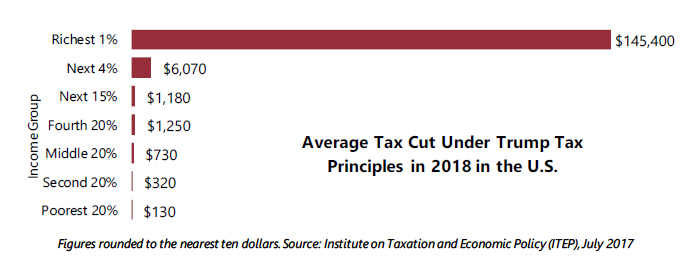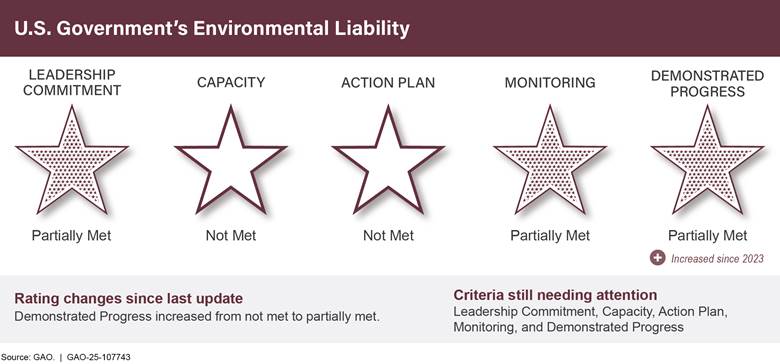Report on Legislative Impacts on U.S. Food Assistance and Sustainable Development Goals
Executive Summary of Proposed Legislation
A proposed reconciliation package includes significant tax cuts, which policy researchers indicate primarily benefit high-income households. To finance these measures, the legislation mandates substantial reductions to the Supplemental Nutrition Assistance Program (SNAP). Analysis by the Urban Institute suggests these changes will adversely affect millions of families, creating direct challenges to the achievement of multiple Sustainable Development Goals (SDGs).
Direct Contravention of SDG 2: Zero Hunger
The proposed cuts fundamentally undermine SDG 2, which aims to end hunger, achieve food security, improve nutrition, and promote sustainable agriculture. The legislation’s impact on food access for vulnerable populations is projected to be severe.
- Scale of Reductions: The Congressional Budget Office estimates the legislation will cut SNAP funding by approximately $186 billion through 2034, representing a 20% reduction and the largest cut in the program’s history.
- Affected Population: SNAP currently provides essential food assistance to over 40 million people. The proposed changes are projected to cause 22.3 million families to lose some or all of their benefits.
- Severity of Benefit Loss: Among the affected, 5.3 million families are expected to lose at least $25 per month. The average loss for these families is estimated to be $146 per month, significantly impacting their ability to secure adequate nutrition.
- Impact on Child Nutrition: Reductions in SNAP eligibility may lead to corresponding cuts in access to free school meals and summer EBT food benefits for children, further jeopardizing food security for the youngest demographic.
Exacerbating Disparities: Impacts on SDG 1 (No Poverty) and SDG 10 (Reduced Inequalities)
The legislation is positioned to increase poverty and widen economic inequality, in direct opposition to the principles of SDG 1 (No Poverty) and SDG 10 (Reduced Inequalities).
- Regressive Policy Structure: The framework simultaneously provides tax relief for the wealthiest individuals while cutting a foundational support program for low-income families, thereby intensifying economic disparity.
- Expanded Work Requirements: New, stricter work requirements will be applied to individuals aged 55-64, parents of children aged 14 and up, and veterans. These rules risk removing benefits from vulnerable groups who may face barriers to consistent employment.
- Penalizing Working Families: An estimated 3.5 million working families could lose an average of $108 per month in benefits due to an inability to consistently meet work-hour thresholds or navigate complex administrative reporting, pushing them closer to the poverty line.
- Restricted Eligibility: The law limits SNAP eligibility to U.S. citizens and lawful permanent residents, creating further inequality in access to basic necessities.
Consequences for SDG 3: Good Health and Well-being
Reduced access to nutritious food is directly linked to negative health outcomes, making these cuts a significant setback for SDG 3 (Good Health and Well-being).
- Food insecurity is a primary driver of poor health, particularly among children, seniors, and individuals with disabilities who constitute a large portion of SNAP recipients.
- The loss of consistent access to food can lead to malnutrition, increased stress, and a higher incidence of chronic diseases, placing greater strain on public health systems.
Economic Repercussions and SDG 8: Decent Work and Economic Growth
The proposed cuts threaten local economic stability and growth, undermining progress toward SDG 8 (Decent Work and Economic Growth).
- Reduced Economic Stimulus: According to USDA research, every dollar in SNAP benefits generates $1.54 in local economic activity. Removing $186 billion from the program will dampen economic activity in communities nationwide, affecting grocery stores, agricultural producers, and transportation companies.
- Weakened Automatic Stabilizer: SNAP traditionally expands during economic downturns, providing a crucial buffer for families and local economies. The proposed changes, including new financial burdens on states, may cripple the program’s ability to respond effectively to future recessions, hindering economic recovery and job support.
Institutional Challenges and SDG 16: Peace, Justice and Strong Institutions
The legislation introduces administrative and financial burdens that threaten the integrity and effectiveness of the institutions responsible for delivering public assistance, a key component of SDG 16.
- State-Level Financial Burdens: The law requires states to cover a portion of benefit costs if their payment error rate exceeds 6%. With a national average error rate of 10.9% in FY 2024, many states may be forced to cut benefits or opt out of the program to avoid financial penalties.
- Administrative Barriers: Increased complexity and stringent reporting requirements are likely to cause eligible families to lose benefits due to administrative non-compliance rather than ineligibility. This erodes trust in public institutions and denies access to justice and essential services.
- Diminished Institutional Capacity: The changes risk overwhelming the administrative capacity of the SNAP program, making it less resilient and responsive to the needs of the population, particularly during times of crisis.
SDGs Addressed in the Article
- SDG 1: No Poverty
- SDG 2: Zero Hunger
- SDG 8: Decent Work and Economic Growth
- SDG 10: Reduced Inequalities
Identified SDG Targets
-
SDG 1: No Poverty
- Target 1.3: Implement nationally appropriate social protection systems and measures for all, including floors, and by 2030 achieve substantial coverage of the poor and the vulnerable. The article discusses the Supplemental Nutrition Assistance Program (SNAP), a key social protection system in the U.S. that provides “basic food assistance to more than 40 million people.” The proposed legislation includes “substantial” cuts to this program, which would reduce its coverage and effectiveness, directly contradicting the goal of achieving substantial coverage for the vulnerable. The article states the changes will cause “22.3 million families to lose some or all of their SNAP benefits.”
-
SDG 2: Zero Hunger
- Target 2.1: By 2030, end hunger and ensure access by all people, in particular the poor and people in vulnerable situations, including infants, to safe, nutritious and sufficient food all year round. The article’s central theme is the reduction of funding for SNAP, a program designed to ensure food access. The cuts directly threaten the ability of millions of vulnerable people, including “children, seniors and nonelderly adults with disabilities,” to access sufficient food. The article notes that children eligible for SNAP may also see cuts in “school meals and in summer EBT,” further jeopardizing their food security.
-
SDG 8: Decent Work and Economic Growth
- Target 8.1: Sustain per capita economic growth in accordance with national circumstances. The article highlights the economic impact of SNAP, citing a 2019 USDA study that “Every dollar spent on SNAP generates $1.54 in benefit for local economies.” By cutting SNAP funding by “$186 billion through 2034,” the legislation could negatively affect local economies and hinder economic growth, especially since the funds support “grocery stores, producers, processors and transportation companies” and can “support hiring even during downturns.”
-
SDG 10: Reduced Inequalities
- Target 10.4: Adopt policies, especially fiscal, wage and social protection policies, and progressively achieve greater equality. The article describes a fiscal policy (the “big beautiful” reconciliation package) that exacerbates inequality. It explicitly states that the package includes “tax cuts that policy researchers have found primarily benefit the wealthy” while being paid for by “substantial” cuts to SNAP, a program for low-income individuals. This policy directly works against the goal of achieving greater equality.
Implied Indicators for Measuring Progress
-
For SDG 1 (Target 1.3) & SDG 2 (Target 2.1)
- Number of families/individuals losing social protection benefits: The article states that “22.3 million families to lose some or all of their SNAP benefits.” This is a direct indicator of reduced coverage of a social protection system.
- Average reduction in benefit amount: The article specifies that “5.3 million would lose at least $25 per month” and on average, these families “would lose $146 per month.” This quantifies the reduced level of support.
- Total reduction in program funding: The article mentions the Congressional Budget Office’s estimate that the changes would “cut SNAP funding by about 20%, or $186 billion through 2034,” indicating a significant scaling back of the program.
- Number of people currently reliant on the program: The article notes that “SNAP currently provides basic food assistance to more than 40 million people,” establishing a baseline from which to measure the impact of the cuts.
-
For SDG 8 (Target 8.1)
- Economic multiplier of social spending: The article cites the indicator that “Every dollar spent on SNAP generates $1.54 in benefit for local economies.” This can be used to model the negative economic impact of the funding cuts.
-
For SDG 10 (Target 10.4)
- Direction of fiscal policy: The article describes a policy that combines tax cuts for the wealthy with benefit cuts for the poor. This serves as a qualitative indicator of a fiscal policy that increases, rather than reduces, inequality.
Summary Table of SDGs, Targets, and Indicators
| SDGs | Targets | Indicators |
|---|---|---|
| SDG 1: No Poverty | 1.3: Implement nationally appropriate social protection systems and measures for all… and achieve substantial coverage of the poor and the vulnerable. |
|
| SDG 2: Zero Hunger | 2.1: End hunger and ensure access by all people… to safe, nutritious and sufficient food all year round. |
|
| SDG 8: Decent Work and Economic Growth | 8.1: Sustain per capita economic growth in accordance with national circumstances. |
|
| SDG 10: Reduced Inequalities | 10.4: Adopt policies, especially fiscal… and social protection policies, and progressively achieve greater equality. |
|
Source: cnbc.com







